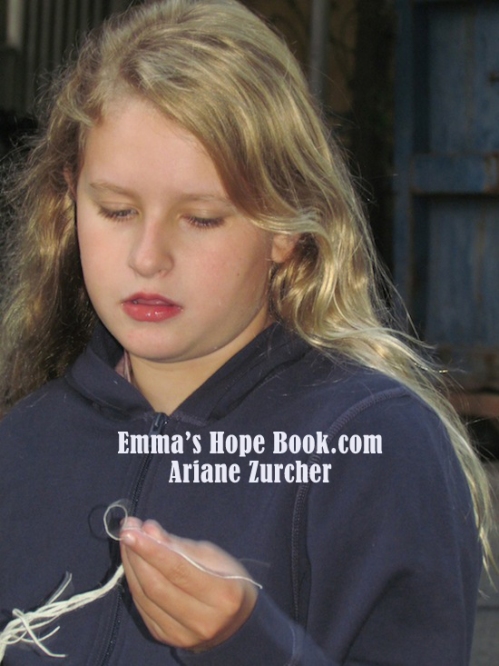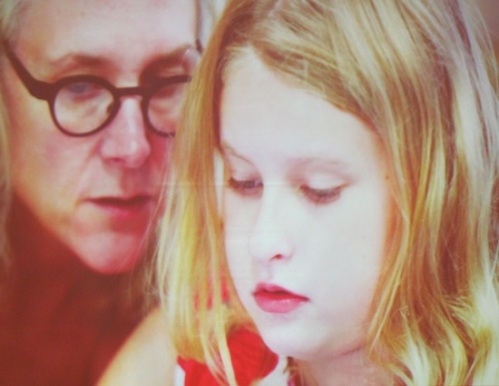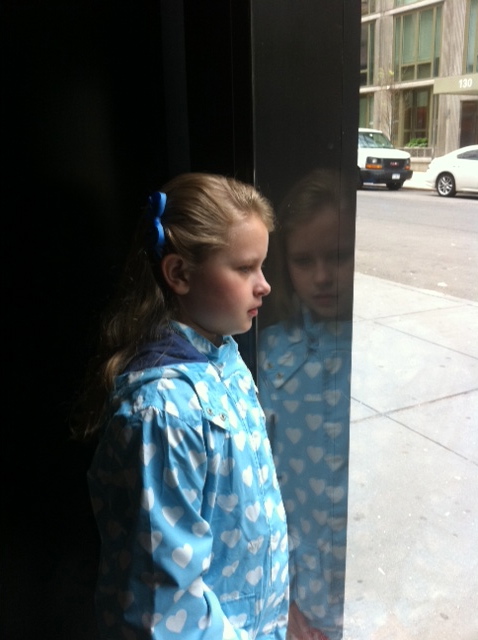“To what extent is it possible to compare the ways in which methods of communication are being taught to autistic students who cannot use spoken language to communicate their complex ideas?”
Introduction
Many autistic students cannot rely on spoken language to communicate their knowledge and ideas. Exactly how many is not known since autism organizations disagree. For example the Diagnostic Center of Central California states, “As many as 50% of individuals with autism are non-verbal and up to 80% are intellectually challenged.”1, while the National Autism Association reports, “About 40% of children with autism do not speak”2 and Autism Speaks weighs in with, “It is estimated that as many as 25% of individuals living with autism spectrum disorders are non-verbal.”3 “Nonverbal,” is an inaccurate term that implies the inability to speak at all, however it includes many who can and do speak words, but do not speak in ways that non-autistic people are able to understand. There is no term for those who can and do speak, but cannot rely on their speech to reflect the whole of their thinking. As a result of this misunderstanding and inaccurate terminology, many autistic students are believed incompetent and are relegated to remedial special education classrooms and schools. All of this is exacerbated by a body that does not obey the commands given to it, and IQ tests, which perpetuate the myth that non-speaking Autistic people have low intelligence. The latter is something that is now being questioned more and more, as demonstrated in this 2015 article for IAN (Interactive Autism Network), “…it cautions that measuring a child’s intellectual ability may be complicated by the symptoms of autism itself.”4 The well rounded education available to students in the general education population is not available to autistic students unless they are given a means to express themselves. However most communication methods involve pictures, symbols and rudimentary phrases such as, “yes,” “no,” “maybe,” “I don’t know,” “I want…” “I need…,” etc. These words and phrases do not demonstrate or allow for deeper thinking, and so it cannot be known exactly what is in a person’s mind who does not have access to more complex vocabulary whether through spoken language or a communication device. As a result, this paper will analyze “To what extent is it possible to compare the ways in which methods of communication are being taught to autistic students who cannot use spoken language to communicate their complex ideas?”
This study will establish the procedure for a survey conducted where the participants are either without speech ability or with speech, but are unable to rely on spoken language to express their complex thinking, knowledge and ideas. The data collected from this survey will be analyzed and discussed and finally this paper will explore ways to move forward based on the collected data and survey findings.
The Survey & How it Was Created
Since many existing communication methods are underrepresented in most schools, I created a survey to find out what methods students use, what they are being taught to use and how successful each method is. Additionally I was curious to know whether a student’s school allowed the communication method chosen by each student to be the most beneficial, and if not, how the student then communicated their complex thinking, knowledge and understanding of the material being taught. The survey used a google form and was anonymous. The people I hoped would participate was anyone who cannot use spoken language to convey their complex thinking, those who cannot rely on spoken language most of the time, those in school or of school age regardless of whether they attend an actual school, are homeschooled, unschooled, take online classses or a combination of all of these. I encouraged anyone who no longer was in school to take the survey by remembering their experience of school. The last group I hoped would take my survey were parents and support persons of students who are beginning to use other methods of communication, but have not yet mastered them and cannot answer open-ended questions on their own. Of this group, I asked they make sure they said who they were when taking the survey so it was clear they were speaking on their student/child’s behalf to the best of their ability and not as the student.
There are a few limitations to this paper that must be discussed. The first was my inability to reach a more diverse population. I attempted to do so, but most of the people who responded were white students who live in the United States. Another limitation is that it is impossible to include the large percentage of students who cannot rely on spoken language to convey their knowledge and thoughts and have not been given the opportunity to communicate through any other means besides spoken language. These students cannot write to communicate because they have not been given the means to do so, thus the survey was unable to reach them.
The data collected from the respondents demonstrated strong parental advocacy, which was reflected in the schools and homeschooling choices available to these students versus those who do not have such choices available to them. As a result, many of the answers show a positive schooling experience as opposed to those who have not been given the opportunity to communicate through other means and cannot rely on spoken language to convey their thinking and knowledge. It cannot be known how those students view their experience in schools or in the world as this survey could not reach them.
In an effort to make the survey easier for the largest number of non speakers, the majority of questions were multiple choice or required short sentence answers. Of the 34 questions asked, 16 were multiple choice and 10 demanded answers of three words or less, such as “How old are you?” and “On average, how long does it take you to answer an open-ended question?” Eight questions encouraged longer answers, such as, “What, if any, method(s) do you use to communicate complex ideas, thoughts and knowledge? Please explain the method” however of those eight questions, five were required. The remaining three were optional questions that the participant did not need to answer if they chose not to. Four of the 34 questions were contingent upon a specific answer making at least three of the questions moot points and therefore not required. A participant was also able to write NA if they chose or some other wording on questions they did not, or could not, answer.
The first 9 questions established the demographic of the participants. The next 13 questions concerned the type of communication methods tried and currently used, and whether these were allowed and used in the student’s school. This was followed by 8 questions pertaining to learning, the school environment, and whether the staff was able to support the student in their chosen method of communication. The final 4 questions asked the participant for more detailed suggestions for administration, teachers, support persons, parents and other comments and thoughts relevant to communication methods.
The targeted participant was reached through my blog, Emma’s Hope Book, where I wrote a post explaining my research paper and why I created a survey. At the end of the post I included a link to the survey and encouraged people to complete it. The post was entitled, Have Your Voice Heard!5 In addition, I shared the blog post on my blog’s Facebook page – Emma’s Hope Book and two days later shared just the link to the survey with a reminder asking people to share on their Facebook timelines. My mother shared my blog post on Facebook and Twitter and sent personal emails to people she knew with children who cannot use spoken language to communicate.
Survey Response
94 people participated in the survey and ranged in age from three and a half to fifty-five years old, though the majority, 85.1% of respondents were between 7 and 29 years old. Five of the respondents were six years old or younger and nine respondents were older than 29 years old. 45% of the respondents were male, 38.3% were female and 13.8% of the respondents identified as either “Omni”, “trans”, “non-binary”, “binary”, “gendervague”, “genderfluid”, “neutrois”, “two-spirit” or a combination of these, while 1% identified as “Child” and another 1% answered, “I don’t know” and “I don’t.” 77.7% (73) of the respondents identified as white, 5% of mixed ethnicity, 4% as either “Hispanic”, “Latina”, “Latino” or “Mexican-American”, 3% “Asian”, 1% identified as black, and the remaining respondents identified with the name of the country they were from or some other word that does not indicate gender, such as “human”. The failure of this survey to reach more minorities was noted and while it is believed students in minority groups are not given an autism diagnosis as readily as white students, it was certainly a problem that this survey did not reach these minority groups; we could have done more to get in touch with those populations. The 94 respondents came from all over the world, but the vast majority, 65%, live in the United States with almost all states represented except for the southern states, particularly the Deep South, where there were none, with the exception of Georgia. 10% of the respondents came from the United Kingdom, 10% from Europe, 3% from Australia, 2% from Canada and the remaining 10% from other parts of the world. Respondents from Russia, Africa and the Far and Middle East were not reached and, as a result, none participated.
As expected, 93.5% identified as Autistic, while 6.5% did not, since most of the respondents were reached through the personal blog, Emma’s Hope Book – Living, Being Autistic and through the Facebook page of the same name. In answer to the question, “Can you use spoken language to communicate?” 36.6% said they could not use spoken language at all, while 49.4% said they could sometimes, and 14% answered “yes.” Those who answered “sometimes” described a wide range of experiences and abilities. Some were able to speak at least some of the time, others could use spoken language rarely and could not use it ever to express complex ideas, while still others reported being able to use spoken language intermittently depending on the situation. Stressful environments greatly contributed to those, who could use spoken language often, no longer being able to do so. This survey was limited to the types of communication methods being taught in schools, to students who cannot ever rely upon spoken language to convey their thinking and knowledge, versus those chosen by these same students to best communicate. There were 24 respondents whose answers were viewed with great interest, but were set aside as they did not meet the criteria needed to answer the theses question.
Of the remaining 70 respondents, the ratio of male, female, and other changed only slightly to 42.9% male, 35.7% female and 8.6% identified with wording indicating gender fluidity of some kind or wording that was has no gender associated with it, such as “child” and “human”. High school was the highest level of education currently held by the greatest number, 41.4%. 20% of the respondents were in grade school, 17.1% in middle school, 10% were in college or had finished college at the time of taking this survey. 1.4% was in a Ph.D program. 72.9% of the respondents were currently in school of some kind, which included homeschool and online schools. The types of schools varied from special education (34.3%), general education (30%), some type of homeschool (25.7%), Online school (5.7%) and/or a combination of these. 20% of the respondents were not in school of any kind due to their age.
In answer to the question “What, if any, method(s) do you use to communicate complex ideas, thoughts and knowledge?” There were a wide range of answers using a variety of methods, and often multiple methods, but the largest percentage (40.6%) used Rapid Prompting Method (RPM) created by Soma Mukhopadhyay,6 with “typing” (12.5%) and supported typing (12.5%), coming in as distant seconds. The remaining respondents listed the following methods, often used in combination: “letterboard”, “AAC (“Augmentative and Alternative Communication”), “Lamp Words for Life”, PECS (Picture Exchange Communication Systems), “communication cards”, sign language, “Touch Chat”, “Proloquo4text”, “Proloquo2Go”, “Assistive Typing”, “Dynavox”, “Nova Chat”, “PRC (Prentke Romich Company) communication device”, “iPad”, physical gestures, body language, sounds, and noises of some kind. One respondent wrote, “Home: RPM. , School: Gestures, noises, biting, scream.” Of the 70 respondents who cannot ever use speech to communicate their knowledge and thinking they were between the ages of 18 months and 22 years old when they were first exposed to the method of communication, which allows them to communicate their complex thinking, though the majority were between 5 and 13 years old when first exposed to the method they now use to communicate.
Another question, “What other methods were you exposed to before and why were they not effective?” produced myriad responses, with ABA (Applied Behavioral Analysis), speech therapy, and PECS (Picture Exchange Communication System) being the most indicated. Sign Language, DIR (Developmental Individual-difference Relationship-based model), RDI (Relationship Development Intervention) and various other methods using story boards, emotions, charts and yes/no cards were also listed. Many people who listed PECS said that it was “too simple”, “cheap talk” and “limited”. A number of people who listed speech therapy wrote things like, “Speech (can’t speak).”One person wrote, “SLP (Speech-Language Pathology) – cannot speak, ABA – cannot speak, Floortime – cannot speak, Picture Charts – not same as speaking.” Another respondent stated,”SLP – did not help I say what I meant or wanted, Floortime – same as speech, ABA – same, picture symbols – too simple.” A non-speaking respondent reported, “Story board, social stories, and regular language. They were not effective because I am non-verbal and the pictures/stories were too overwhelming to process all at once.” Another wrote, “ABA, it did not presume competence. It did not take into account neurological differences. Speech did not take into account apraxia. RDI was limited in addressing communication using words. Biomedical did more harm than good. OT did not help with communication. Floortime was based on motor abilities I did not have.” Still another wrote, “Speech therapy: the words wouldn’t voice, sign language: I wasn’t able to shape the signs. When I tried I couldn’t manipulate my hands, Proloquo2Go pictures: While I wish I could’ve demonstrated more, motor planning was more than I could do, typing with both hands: Supplying my right and left hand with motor planning wasn’t possible, prompt speech: voicing was only possible while prompted, facilitated typing and writing: people quietly wouldn’t believe my words, handwriting: Nobody could read it.” This respondent, who cannot use spoken language to communicate, wrote, “Speech therapy cannot help brain-to-mouth derailing. Insistent words do not form on lips, add to useless feelings of non-worth. ABA – concentrating on behaviors resulting from volcanic frustration, years of living without light and hope causes more disruption. Learning rules of behavior that motor issues make impossible from people with timers who do not, and will not, ever experience depths of sadness and despair known by those they intend to “help”, is no answer. Lava of heartfelt pain communicates differently. They cannot understand.” Another non-speaking respondent wrote simply, “Lots – not good.” One respondent who identified as being able to speak “sometimes” wrote, “I progressed by speaking in scripts.” A parent reported, “… was being forced to speak all the time by SEITS/therapists. They occasionally used PECS. They did not work on reading/spelling/typing.” Another parent reported, “No progress of any kind was made in the public school system.”
The next question asked, “If you are in school, is this method of communication used/allowed in your school?” Of the 70 respondents who cannot ever use spoken language to communicate their complex thinking, 50% said they were allowed to use their chosen method of communicating at school, though a number of them noted they could not because no one was trained to support them. 28.6% responded that they were not allowed to use their chosen method of communicating at school and the remaining respondents were no longer in school. Of the 50% who were allowed to use their chosen method at school, 52.8% said the staff at their school was not trained in the method of communication of their choosing, while 47.2% reported the staff was. Of these, 52.8% the majority (91.3%) stated their teacher/support person had received training through the school district, through private training provided by the parents and/or DOE or was self initiated. The remaining respondents did not know where the staff had been trained or if they had been trained anywhere. A few respondents indicated they believed the staff was “self-taught.”
In answering the question, “How long has the support person been practicing this method?”most responded with 5 years or less, while one reported “more than 20 years” and another, “10 years.” The number of students this person supported was typically just one and sometimes up to 3. Much rarer was more than 3, though one person reported that the staff supported, “dozens” and another, “12 or more.” Most of the respondents said they were able to communicate with anyone trained to use the method of their choosing, though one person said they could communicate with one person and another reported they could with “a few”. One person typed “zero” suggesting they may have misunderstood the question. The most likely person the respondent was able to communicate with was a parent (82.9%), and 51.4% were able to communicate with a trained person independently employed by the family. 50% reported being able to communicate with a trained staff person. 35.7% said their school did not use the communication method of their choice and they were not allowed to bring a trained support person at their own expense to school so that they could communicate. 20% reported that they were allowed to have a support person come with them. Many (27.2%) reported that as a result they cannot communicate at school or must rely on gesturing, while a couple of respondents reported that they “try to speak” and two people wrote, “PECS”. The remaining respondents did not answer the question.
The following questions asked the respondents to discuss their learning experiences and, as a result, how they viewed themselves as students. 52.9% reported that their teachers give them time to answer questions, 15.7% said their teachers did not give them time to answer questions and 21.4% said they were sometimes given the time. 50% wrote that they were encouraged to participate in group discussions, 20% were not encouraged to participate and 17.1% said they were sometimes encouraged. In keeping with these percentages, 42.9% felt they were treated respectfully at school by the teachers and staff, while 15.7% said they were not and 31.4% said they were sometimes. However, 68.6% felt they were in a positive learning environment. This discrepancy between the question of a positive learning environment and being treated respectfully is most likely due to the respondents who are no longer in school and were reporting on their past school experience versus their current environment. 21.4% felt they were not in a positive learning environment. Over half (48.6%) of the respondents felt they were believed competent by their teachers, and 18.6% believed they were not, while 17.1% felt they were sometimes believed competent by their teachers. The majority of respondents (88.6%) reported they believed they were “capable of learning” with just 2.9% saying they did not believe themselves to be capable of learning and 7.1% believed they were sometimes capable of learning. In keeping with this theme of learning, 74.3% wrote they enjoyed learning, 4.3% said they did not and 17.1% reported they sometimes enjoyed learning. The next two questions required longer answers regarding advice for school administrators, teachers and support persons. Many urged for “patience”, “compassion”, to “believe in the student”, “learn RPM”, and “assume competence”. Others asked for inclusion and not segregation, and the majority of respondents asked that staff be better trained in AAC devices in general. A couple of people pleaded “listen”, “give me a chance”, while several others asked that they not be treated like “babies” and advised that the curriculum reflect their age. Most people stressed the importance of AAC devices and teaching students to use them at an early age.
The next question, also requiring a longer answer, was advice for parents. The most common answers urged patience, encouraged perseverance in working with their child, trying many different devices and methods of communication, compassion, understanding and believing in your child, and in their competence. A great many suggested RPM as the method that should be learned (26%), while others advised writing and typing as important, if not more important, than speech therapy, particularly for those children who have little or no language.
The final question asked for “any other comments, thoughts relevant to communication methods.” This last question was optional and 75.7% of the respondents answered with a wide variety of answers, including, “To be able to communicate even when spoken language misleads is life altering and though it is hard work it is worth the hardship.” Another pointed out the high cost of AAC devices and that these need to be made available and accessible to all families no matter what their income level is. The issue of cost did not come up often, however, cost is certainly a factor when it comes to AAC devices, as well as training and being able to provide a non-speaking person with other methods of communication.
The survey was broken down into the following sections: demographics, education, communication method(s) found most useful to the respondent, communication methods introduced and used by schools, the respondents thoughts about education, and finally, advice for administrators, teachers, and parents. In looking at the demographics the majority of respondents were white, autistic, non speakers/those who cannot ever rely upon spoken language to convey their thinking and knowledge, between the ages of 7 and 29 years old. Gender identification was of interest because it is commonly believed that autism is more prevalent among males. However this survey suggests more studies are needed as only slightly more males responded than females. More than 10% responded with words describing a gender that cannot be labeled “male” or “female”, suggesting autistic people may not be as influenced by societal pressure to identify as one gender. The largest percentage of respondents are in high school, with middle school coming in a distant second. More respondents reported being in a Special Education School or classroom than any other. There were almost as many students in General Education Schools. Those students who are homeschooled came in as a distant third, though it must be noted that many respondents are in a combination of the three. The most common communication method preferred and used by the largest number of respondents was RPM, which was to be expected as the groups most readily reached through social media use RPM or learned to type using RPM. The majority of respondents were first exposed to the communication method of their choice between the ages of 5 – 13 years old. Interestingly, although the communication methods most commonly used by schools were speech and speech therapy, ABA and PECs, none of these methods were cited by the respondents as the communication method of their choice, suggesting a discrepancy between what is actually needed and what is being used by schools. Exactly half of the respondents said they were allowed to use their communication method at school, though more than half reported that the school and its staff were not trained in this method and most of the respondents said they were not allowed to bring in someone trained in their chosen communication method. As a result these students reported they cannot communicate while at school, other than resorting to “gestures”. Half of the respondents reported being given enough time to answer questions, participate in discussions and felt they were believed competent by their teachers. Just under half felt they were treated respectfully by teachers and staff, with slightly more than half saying they did not feel they were treated respectfully. More than half felt they were in a positive learning environment. The vast majority of respondents believe they are capable of learning and enjoy learning. The advice was that administrators, teachers, staff, support persons and parents should be patient, assume competence and receive training in RPM. Better training for AAC devices in general was also a popular piece of advice for teachers and staff. Finally the respondents voiced an overwhelming desire to communicate and the importance of being able to do so, which is not surprising given that our society places such importance on spoken language and incorrectly assumes those who cannot speak are unable to think.
Moving Forward
Given the above results, the next steps should be heeding the experiences and advice from the respondents of this survey. To date much of the methodology comes from researchers or people who speak and therefore are not non speaking or unable to ever rely upon spoken language to ask questions or convey their knowledge and complex thoughts. This must change if we are going to see real advancements made for students who cannot speak in ways the general population understands or accepts. As one respondent implored, “Give me a way to communicate, stop waiting for speech to come.”
What follows are some of the suggestions respondents made when asked for advice directed to administration, staff, teachers, and support people. One respondent wrote, “Thank you for your patience on my bad days when typing is hard. I always try hard but some days I can’t do it. Don’t give up on me.” Another said, “Get them (students) some way that they can communicate! Use the technologies that are available as a first choice not a last choice! Don’t let frustration build up to overflowing then taint everything else.” Another person wrote, “first to understand that it is possible to have unexpressed thoughts and internal life” while another wrote, “to know that others may be the same as me: I am intelligent but happen to have a body that does not obey my thoughts.” One respondent wrote, “Meaningful life experiences come when we are allowed to participate.” A parent wrote, “Examine your curriculums and make sure they are interesting.” Another parent said, “They must not discount students based solely on their inability to get their words out…. Many nonverbal children have great intelligence that is missed because all anyone wants to give them credit for in the early years is talking, which is, quite frankly, very over-rated.” A number of respondents suggested that alternate ways of communication should be explored immediately instead of so many of the early years being devoted to speech and speech therapies. Several people urged administrators and teaching staff to “listen to autistic people, read what nonverbal autistic people are writing.” Motor planning challenges and executive functioning issues were listed as things that need more attention. Improved, and more training of staff by autistic people, so the staff better understands autism, especially in terms of behavior and functioning. “I want more schools teaching understanding of autism as a motor planning problem, not lacking intelligence,” one person reported. A large number of respondents advised administrators to offer training in RPM to their teachers and staff.
In answer to the question asking for advice for parents, one respondent wrote, “Listen to me. Communication is not just words.” Another wrote, “Make sure your children know that they are not the problem, the system is.” One respondent advised, “Stop trying to “cure” or “fix” or force normalcy…” Another said, “Teach your child to advocate for themselves. Show them how. Encourage them.” Another wrote, “Give them a way (to communicate) Don’t wait for speech to come.” A number of respondents urged parents to take their child to a qualified RPM provider and many others simply wrote, “Learn RPM.” One respondent said, “Don’t stop searching for a reliable means for your child to communicate. It is a basic human right. It’s vital…. If your mouth was taped with duct tape, your hands bound with duct tape, and you’re bound to a chair would you understand what I was saying to you any less?” Our motor issues challenge us in similar ways.”
For the final question asking for any other comments or thoughts relevant to education and methods of communication, one respondent wrote, “Please help dispel the practice of using only ABA type models to help autistics. Until there is the realization that the so called experts, unless autistic themselves, have no clue what is best for us, they must allow for that which we need to access communication. This includes support by trained communication providers and training for more people to support future generations.” Another wrote, “Realistically in CA right now the best option is homeschooling. Sadly the schools are so ABA drill based that brilliant voices are locked inside so many kids here.” A few respondents advocated for teaching sign language at an early age. Many again urged that RPM should be learned. One respondent wrote, “Look at your own prejudices and work on being a more compassionate and understanding person. Autism carries many gifts as well as challenges. We need to start concentrating on those gifts and helping all of us grow together.” And finally this, “The face of autism is continually changing. As autistics become more involved in the conversation, our understanding is evolving. This is a good thing. I’m fully included on a university campus and I love it! I’m a straight A student and participate in a national honor society. I’m a full-time sophomore. Gratefully, I am taken very seriously on campus by both the administration and the faculty. I enjoy interacting with my peers with my communication partner’s support. I have to confess, I was nervous it would go differently. I’m thrilled to be achieving higher education!”
While patience, assuming competence, learning RPM and other alternate communication methods were among the most popular suggestions, there were many who asked that communication devices in general be made available to all students. The idea that speech therapy is a given, particularly during early intervention, but learning to use an alternate communication device is not, was brought up by a number of respondents. The intelligent, thoughtful and often creative responses from the autistic people and their parents who answered this survey are examples of why autistic people, particularly those who cannot ever rely on spoken language to express their views on topics such as this, should be actively sought out and listened to. Until autistic people have a voice in this discussion, there will continue to be a large gap in what they prefer to use to help them communicate and what is being given or taught to them. The motto of disability groups world wide is, “Nothing about us, without us.” The world and particularly the Department of Education would be wise to heed those words and act accordingly by including autistic people in their planning moving forward.
Conclusion
In conclusion, the importance of alternate methods of communication being made available to students who cannot ever rely upon spoken language to communicate their complex ideas cannot be overstated. Without a way to communicate these students are left voiceless and with no means to communicate other than through their screams or other ways of moving and acting to communicate their frustration and upset. These actions, often viewed as disruptive are more likely to result in negative responses than the kindness and patience the respondents of this survey said they so desperately need and desire. Without any way to communicate these students are unable to ask questions, participate in discussions or engage in intellectual discourse.
It is clear that there are a number of existing communication methods that work for a great many – RPM and AAC of different kinds, but more, cheaper methods are needed. More studies are necessary to find inexpensive alternate methods of communication for non-speaking students, so that all students, no matter their race, age or socio-economic background can be an active participant in their learning, education and learning environments. In addition it is imperative that students who are able to communicate through typing, writing or some other way are listened to and brought into the conversation regarding what works and what does not. Simply using methods that exist because they are available, even though the respondents of this survey agreed they were unhelpful is not a solution. A number of respondents listed a number of methods they use, including “body gestures” because the communication method of their choice was not used in their school, so they were forced to make do with a method that was not their first choice. It cannot be emphasized enough – this must change.
The two biggest limitations of this survey, and therefore this paper, were the inability to reach a larger and more diverse population of non-speaking students and the issue of cost for training and devices, which makes alternate types of communication difficult, if not impossible for lower income families and their schools to obtain. Until communication, in all its forms, is seen as being as important as spoken language and placed as a priority by society, our schools and school districts, this will likely not change.
Without an ability to communicate, we are left silent, and believed to have nothing to say.
Just because we cannot speak, does not mean we cannot think.
Bibliography
Long, Bev. “Autism Basics.” Autism Forum Basics – Diagnostic Center Central (DCC). N.p., n.d.
Web. 14 Dec. 2016.
“Autism Fact Sheet.” National Autism Association RSS. National Autism Association, n.d. Web.
12 Dec. 2016. “Autism Fact Sheet.” National Autism Association RSS. National Autism
Association, n.d. Web. 12 Dec. 2016.
“Researchers Focus on Non-Verbal Autism at High Risk High Impact Meeting.” Autism Speaks.
Autism Speaks, n.d. Web. 12 Dec. 2016.
Sarris, Marina. “Measuring Intelligence in Autism.” Interactive Autism Network. N.p., 20 Oct.
2015. Web. 17 Jan. 2017
Zurcher-Long, Emma. “Have Your Voice Heard!” Blog Post. Emma’s Hope Book. N.p., 05 Dec.
2016. Web. 16 Dec. 2016
Thanks to all who participated. Writing this research paper was an assignment in my English class and was extremely difficult for me. It took many months with tons of edits, revisions, and help from my mom and my English teacher, Ms Greenberg, both of whom I am grateful to, as I could not have done this on my own.
*Note from my mom – Emma turned in this research paper on February 2nd, 2017. In order to republish it here, I had to reformat the entire thing and even so, I was unable to include the 20 plus pages of graphs that she worked off of from all the respondents. I meant to post this right away, but as you can see, “right away” becomes relative.

Photo by Pete Thompson

















